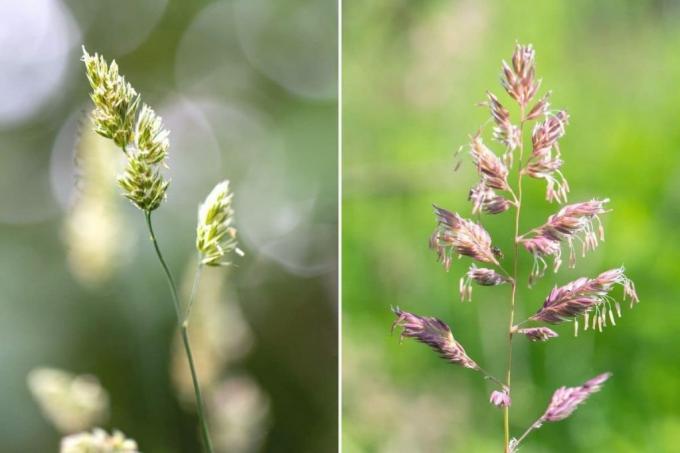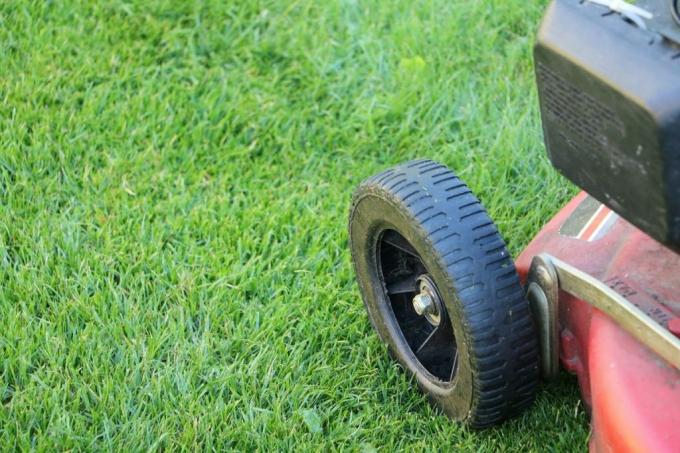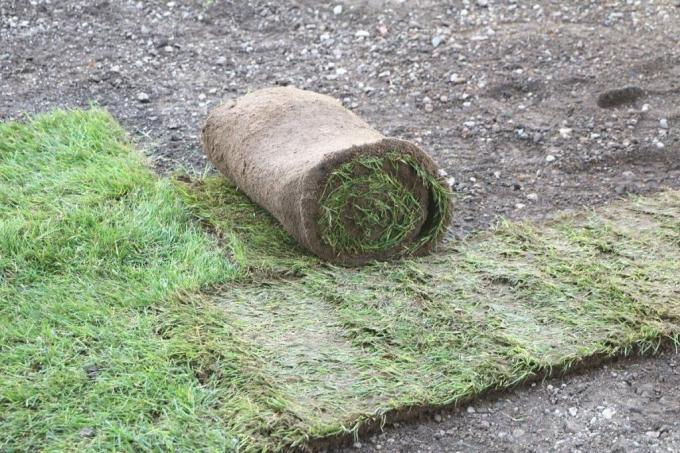
table of contents
- Recognize bluegrass
- Combat common panicle
- Worst-case herbicides
- frequently asked Questions
When in the spring on a really nice one race show yellow to brown spots, this may be due to the common panicle that spreads here. The wild grass can spread very quickly via seeds and reacts faster to drought than the cultivated grass.
In a nutshell
- Poa trivialis spreads via seeds and can quickly blow from a neighboring field into your garden
- good lawn care as a good prevention against common panicle
- Regular scarifying can remove unwanted wild grass
- Unsightly holes in the lawn can be closed by re-sowing
- if nothing helps, use herbicides and recreate the lawn
Recognize bluegrass
If an actually lush green lawn is suddenly crossed by yellow to brown spots, then it could be that Common panicle, which is established here in different places after a seed flight from the neighboring field or meadow Has:

- perennial wild grass
- very rapid spread through the flight of seeds
- does not tolerate drought
- then shows yellow to brown spots
- lighter than a typical cultivated turf grass
- can be recognized by its light green color
- has shallow roots
- can easily be ripped out
- retires in autumn
- there are holes in the surface
Even if it looks as if the common panicle will no longer be there in autumn, it has only withdrawn and rests above ground. After a while it will sprout again and so be able to spread even further on the surface.
Note: The unsightly spots in a lawn that can cause panicles are often covered with a Fungal infection confused and then unfortunately treated completely wrong with fungicides and the like.
Combat common panicle
It is not easy to remove the common panicle from what used to be a beautiful lawn. This requires many steps, which are primarily aimed at strengthening the cultivated grass and weakening the wild grass that is spreading here:

- several times very short mowing
- then mulch well
- gives the cultivated grasses strength through nutrients
- wait a couple of weeks
- then completely scarify the area
- this removes the Poa trivialis
- bald spots appear
- sow new seeds
- water well
Tip: If there are so far only individual places in the lawn on which the common panicle grows, you should tear them out or prick out immediately after recognizing them. This means that the plant has no way of spreading further and simply overgrowing and displacing the cultivated grass.
Worst-case herbicides
Is the entire lawn affected by the common panicle, for example because the lawn has not been properly cared for in recent years then usually only the use of herbicides helps - of which we expressly again at this point advise against:

- apply in autumn
- not only destroy the bluegrass
- Cultivated grass plants are also victims
- Dig up the entire area after use
- Remove all old parts of the plant
- can be added to compost
- alternatively distribute new fresh soil
- give up fresh lawn seeds in spring
- or manufacture Turf to use
- then scarify and mow regularly
Tip: If a lawn is not mowed too short with normal maintenance, the plants experience less stress and are more resilient. In addition, these grasses shade the soil more intensively, so that seeds from the outside have a harder time to settle and germinate here.
frequently asked Questions
By scarifying, weeds and bluegrass, which has significantly shorter roots, are torn out of the area. Especially when there are already brown spots on the area because the wild grass has died due to lack of water. The spots can then be reintegrated into the entire area with new seeds.
Yes, scarifying can be very exhausting. If you have the problems with the blown seeds of the wild grass every year, you should think about a combination device. Because the trade has been offering lawnmowers for a long time, which also offer the function of scarifying. So you can combine two work steps in a single one.
The common panicle does not form its seeds until the summer months, when it is warm enough, which are then carried in all directions by the wind. To avoid this, you can mow your lawn regularly on a weekly basis. The shorter Poa trivialis is kept, the less there is seed formation.
Even if Poa trivialis blends in well with a lawn, it still has the property of suffocating the cultivated grass plants over time. The perennial wild grass plant continues to spread. The light green grass forms thick stalk mats and is unfortunately not very attractive and aesthetic.
